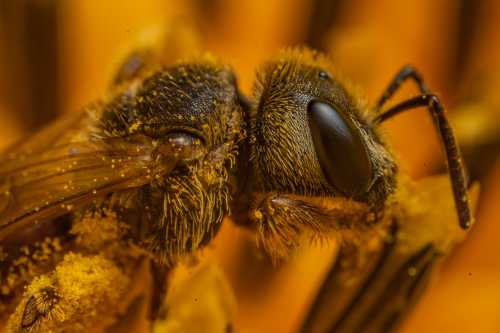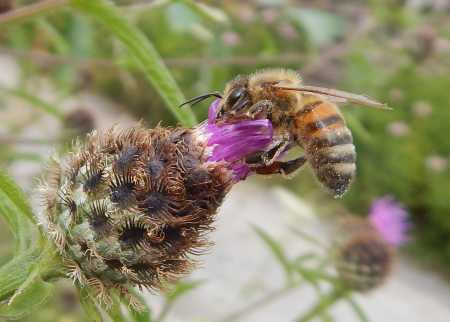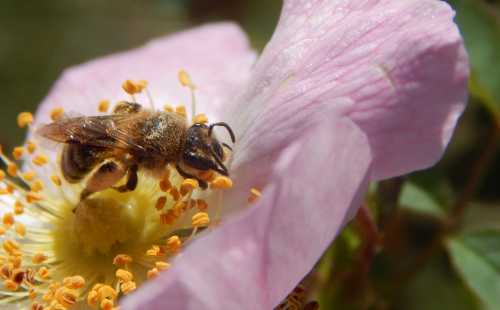Do bees have ears?
Can bees hear?
How do bees pick up sound?
Question:
Dear Buzz About Bees
Do bees have ears?
- Brad, USA
The short answer is:
No, bees do not have ears, however, they are able to pick
up sound, so yes, in a sense they can ‘hear’ but not through the use of ears.
How do we know that bees can detect sound?
Several research experiments have confirmed this.
In 1989, researchers Towne and Kirchner managed to train
bees to leave a feeder in response to a sound signal, and in order to avoid a
mild electric shock.
Later, in 1991, Kirchner et al trained bees to turn left or right as they entered a feeder, depending on a sound signal.
So if bees don’t have ears, how do bees detect sound?
 Photograph, with thanks to Isaias Sanchez
Photograph, with thanks to Isaias SanchezSo far as scientists can make out, bees may use:
- The antennae – actually, a very particular part of each antenna. In honey bees, there are a collection of sensory cells (called the Johnson’s organ) that are sensitive to vibration (remember that sound waves are basically vibrations), and they are found in the second segment (called the pedicel) of each antenna.
- The
legs – In honey bees, sound vibrations are picked up by organs in the legs,
called subgenual organs.
At
the time of writing this page, it’s not clear how bumble bees or solitary bees pick
up sound, although we might guess they pick up sounds in similar ways to honey bees.
How do bees use sound information?
When honey
bees perform their famous waggle dance, a dancing bee waggles her abdomen and
vibrates her wings.
The vibrations and sounds she creates are then detected by other members of the colony, (Michelsen et al. 1986a; Dreller and Kirchner 1993a; Michelsen 2003), such that she is able to transmit important information to other colony members.
Sound is important in honey bee communication. Honey bees use a range of piping and buzzing sounds in the nest that are picked up by other bees, and are used to communicate and affect behaviour of the colony.
For example, a small group of experienced forager bees called 'nest-site scouts' produce a "piping-signal" that primes the workers for swarming (Rangel, 2008).
You can read more about this on my page about how and why bees buzz.
Resources:
- Dreller, C. and W.H. Kirchner 1993a. Hearing in honeybees: localization of the auditory sense organ. J. Comp. Physiol. A 173: 275-279.
- Dreller, C. and W.H. Kirchner 1993b. How bees perceive the information in the dance language. Naturwissenschaften 80: 319-321.
- Kirchner, W.H. 1993. Acoustical communication in honeybees. Apidologie 24: 297-307.
- Kirchner, W.H. 1994. Hearing in honeybees: The mechanical response of the bee’s antenna to near field sound. J. Comp. Physiol. A 175: 261-265.
- Kirchner, W.H., C. Dreller and W.F. Towne 1991. Hearing in honeybees: Operant conditioning and spontaneous reactions to airborne sound. J. Comp. Physiol. A 168: 85-89.
- Towne, W.F. and W.H. Kirchner 1989. Hearing in honey bees: detection of air-particle oscillations. Science 244: 686-688.
If you found this page helpful or interesting, I'd really be grateful if you would share it with others - if not this page, perhaps another, such as Gardening For Bees.
Thank you so much :) .

